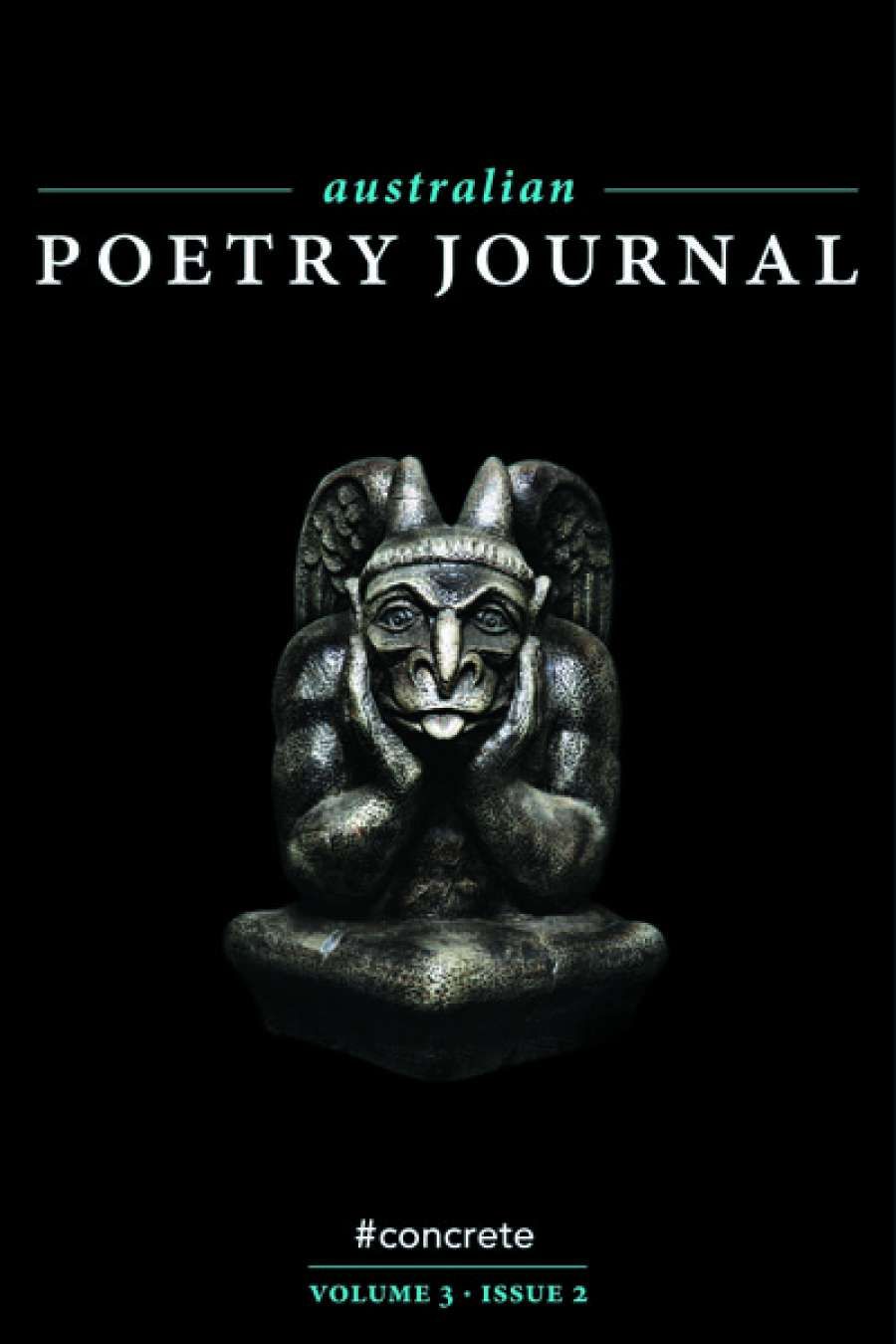
- Free Article: No
- Contents Category: Journal
- Review Article: Yes
- Online Only: No
- Custom Highlight Text:
My first encounter with concrete poetry came via Apollinaire’s Calligrammes (1918), specifically his eye-catching poem ‘Il Pleut’. With its gently cascading words falling down the page, it was immediately clear that the typographic arrangement of the poem was of far greater import than its semantic content.
Although the term was not coined until the 1950s, concrete poetry draws upon traditions as diverse as ancient Greek shaped poems, Lewis Carroll’s ‘The Mouse’s Tale’, and the typographic experiments found in early twentieth-century Dada and Futurist publications. Despite this, concrete poetry has historically fallen between the cracks of various critical discourses. Is it art or is it poetry?
- Book 1 Title: Australian Poetry Journal
- Book 1 Subtitle: Vol. 3, No. 2
- Book 1 Biblio: Australian Poetry, $25 pb, 90 pp
It is encouraging therefore that a mainstream poetry journal has seen fit to devote a special issue to the form. Roughly half the issue is devoted to reproducing work by twenty-two local and international poets, including a number significant to the field, such as Richard Tipping, pete spence, and the late Cornelis Vleeskens. The issue also includes several essays: π.o’s paean to iconoclast poet Jas H. Duke; and Alex Selenitsch’s memoir of the concrete poetry scene in Australia from the late 1960s until now.
While concrete poets have long utilised lo-fi technologies – typewriters, Letraset, photocopiers – there is increasingly a tendency, as seen in the work of Angela Gardner and James Stuart, to embrace digital and photographic processes. As Selenitsch notes: ‘All Australian visual poets use archaic and persisting, as well as new, technologies.’
While this issue of Australian Poetry Journal cannot aim to do more than introduce new readers to the field, I hope it will lead some to seek out other available publications on the subject, such as the catalogue to the recent exhibition Born to Concrete (2013) or James Stuart’s excellent e-publication The Material Poem (2007).


Comments powered by CComment